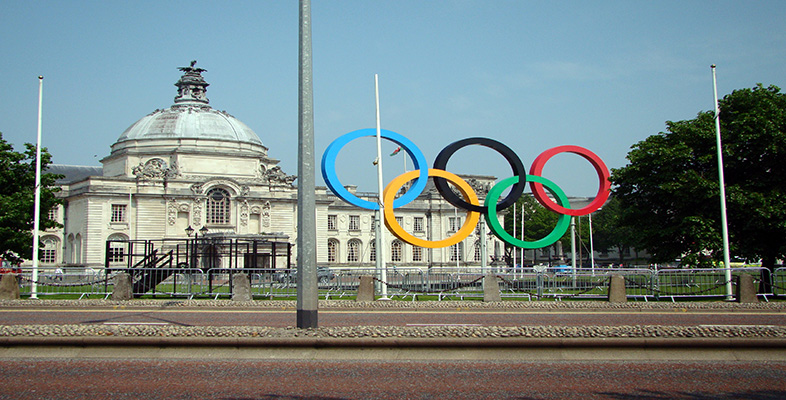8.1 Running Events
The fourth day of the Olympics also started at dawn with a procession from the Altis area. Athletes and Hellanodikai marched towards the apodyterion (the Ancient Greek version of our modern locker room), where the athletes undressed and rubbed oil from the aryballos onto their skin. The Hellanodikai made their way to the Hellanodikaion (the judges’ stand), a small fenced area by the stadion from which they observed the races and ensured that all the rules were being followed.
After the athletes entered the stadion and saluted the cheering crowd, the races began. Just like in the foot races of the pentathlon, the running events of the fourth day were divided into four types: the dolichos, the stadion, the diaulos, and the hoplitodromos. The styles of running and speed of the athletes varied depending on the type of race and distance. The first event was the dolichos (which was the longest of all and therefore gave the audience a chance to take their time settling down first thing in the morning). This was followed by the stadion which shared its name with the track on which it was held. The stadion race was considered especially significant – the entire Olympiad was named after the winner of this event. The last race was the hoplitodromos, which was added to the Ancient Olympics in 520 BCE and was probably viewed by Ancient Greeks with a combination of humour and admiration, with all its collisions, mishaps and clanking noises.
Animation 8 hopplitodromos
Each end of the stadion track was marked by a balbis, which acted as a starting and finishing line. The balbides (plural of balbis) ensured that the athletes' feet were side by side at the start of each race. This suggests that the traditional starting position in the Ancient Olympic races was upright (unlike the modern four-point starting position), and, judging by some scenes on decorated vases, with the arms stretched forward. The balbides at Olympia were some 30 metres long (i.e. approximately the width of the stadion). This restricted the number of competitors that could run side by side against each other. As a result of this limitation, it is likely that the foot races were held in at least two rounds, followed by a final runoff between the victors of each round.
